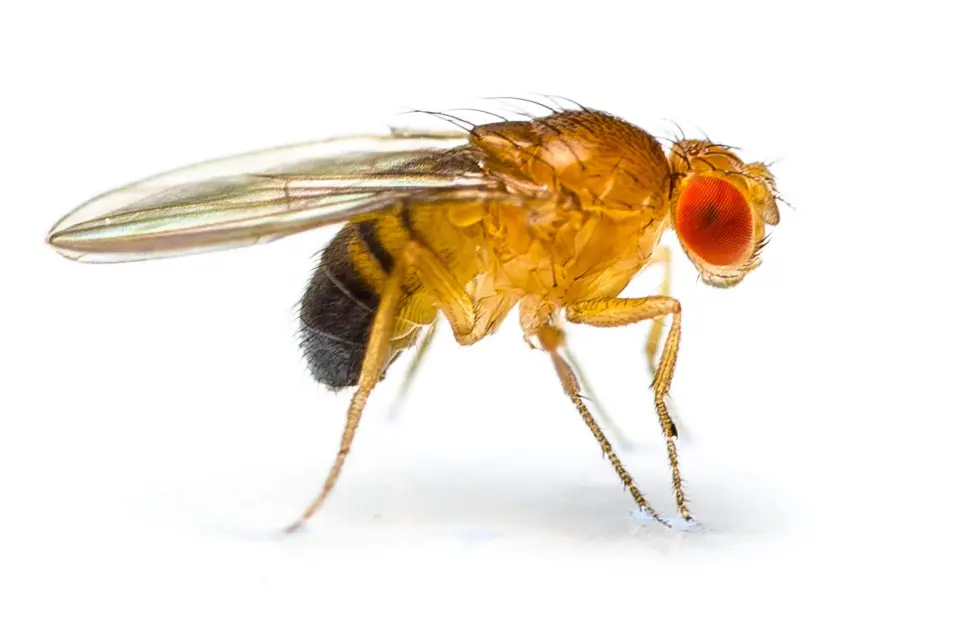Say Goodbye to Fruit Flies: Protect Your Freshness with Expert Solutions
1. Physical Characteristics
- Size: 1/8 inch (3-4 mm).
- Color: Tan/light brown body, darker abdomen.
- Eyes: Bright or dark red.
- Wings: Transparent, longer than the body.
2. Behavioral Traits
Flight: Erratic hovering near food sources.
Breeding: Moist, fermenting organic matter (fruits, drains, garbage).

Life Cycle
Rapid growth: Egg to adult in 8–10 days.
Lifespan: 2 weeks; females lay up to 500 eggs.
Common Locations
- Found in kitchens, grocery stores, compost bins.
- Thrive near drains, sinks, and standing liquids.
Feeding Preferences
Fruit flies (Drosophila spp.) are highly attracted to fermenting and decaying organic matter. Their primary food sources include overripe or rotting fruits and vegetables, sugary residues, and fermenting liquids such as beer, wine, and vinegar. They may also feed on residues found in drains, garbage bins, and beverage dispensers.
Habitat
Fruit flies thrive in warm, moist environments, particularly in areas where food is stored or processed. Common habitats include kitchens, grocery stores, food preparation zones, compost piles, and drains. They are often found hovering around trash cans and recycling bins where fermentable residues are present. Their preference for fermenting materials makes sanitation critical in preventing and managing infestations.
AIR Approach for Fruit Flies:
- Assess: Inspect your home for potential breeding sites, such as overripe fruits, garbage bins, and moist organic matter, to assess the severity of the infestation.
- Implement: Apply targeted treatments like traps and remove all potential breeding materials, such as rotting fruit, to disrupt the fruit fly's lifecycle.
- Review: Regularly monitor kitchens, trash bins, and food storage areas for signs of fruit fly activity and adjust treatments as necessary to maintain control.

Frequently Asked Questions
Fruit flies (Drosophila spp.) are small insects attracted to fermenting organic matter. They are problematic because they contaminate food and can multiply quickly in conducive environments.
Fruit flies are drawn to the smell of fermenting or ripening organic materials, such as fruits, vegetables, and sugary liquids, as well as residues in drains and garbage bins.
Signs include spotting small flies hovering near food sources, drains, or trash, as well as noticing eggs or larvae on decaying organic matter.
They often enter through open doors or windows, or they hitch a ride on infested fruits, vegetables, or other organic materials brought indoors.
Yes, fruit flies can breed in drains if there is a buildup of organic material that provides a suitable environment for their eggs and larvae.
Fruit flies are attracted to fermenting organic matter, while gnats are typically found near moist soil, plants, or decaying vegetation.
Recurrent infestations may indicate hidden breeding sites or insufficient sanitation. A thorough inspection and professional pest control services from UPM can help resolve persistent issues.